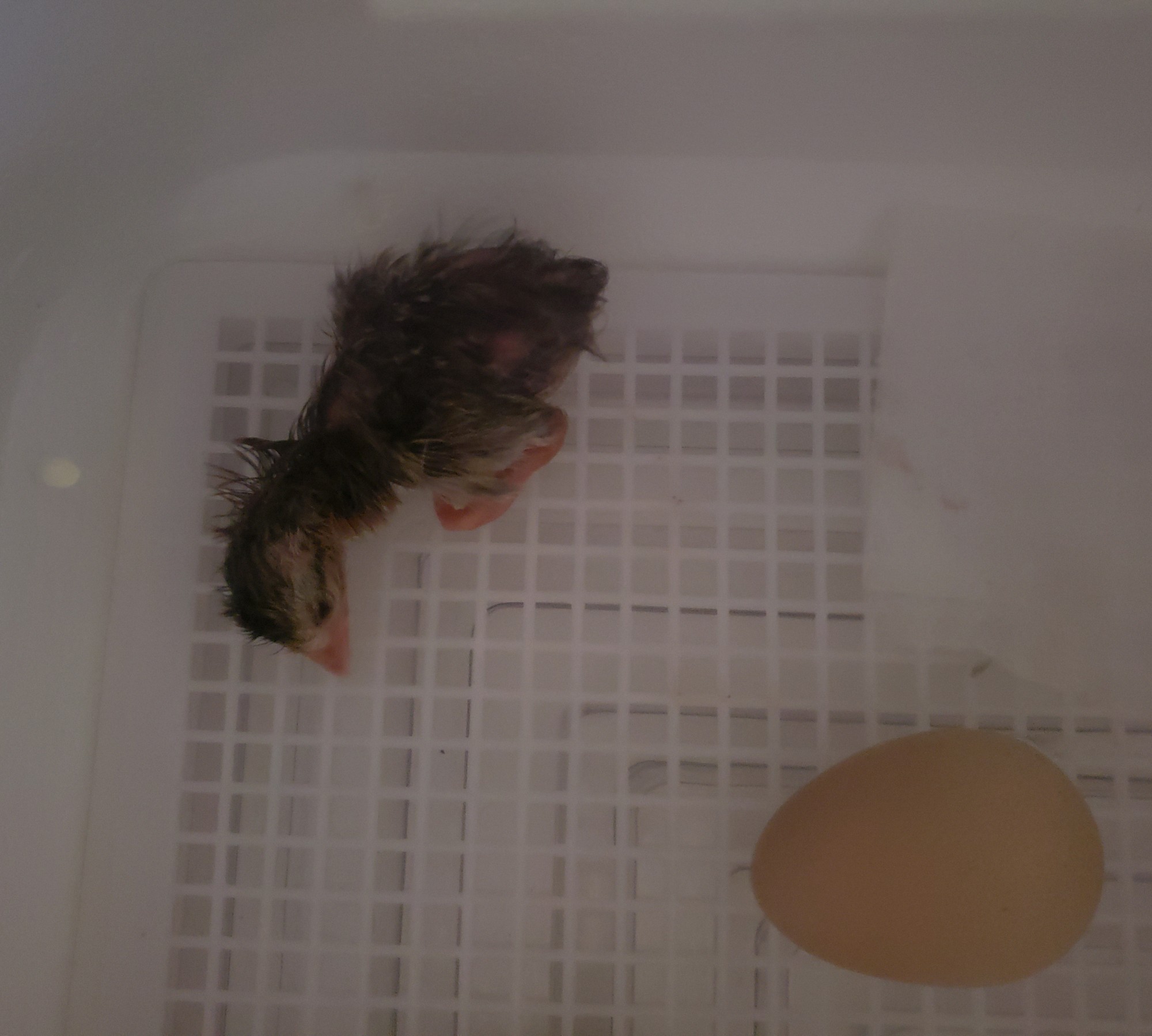
It’s a topic that often seems to be avoided, but is a real part of raising livestock: losing animals. Sadly, this morning, we found a 10 day old guinea keet dead in the brooder. While it will never be easy, a farmer learns to accept that losses will occur even when you’ve made your best efforts to prevent them…and learns from his or her mistakes.
Otherwise healthy, this pearl keet had manifested a limp in one leg a couple of days ago, and manipulation of the hock area indicated that the tendon had slipped out of place. We immediately wrapped it with elastic bandaging to try to keep it in proper position, and the keet seemed to be getting around satisfactorily. To our dismay, though, the keet began limping on the “good” leg also yesterday. With both legs out of commission, the little one could only crawl along on the floor of the brooder using its wings, which was difficult to watch. In addition, the other keets, in typical fashion, ran around like possessed creatures and occasionally trampled the disabled keet.
An argument could be made that the best course of action would have been to euthanize a keet in this condition, but we decided that it would be reasonable to to try to help and allow the animal an opportunity to heal itself, utilizing skills we’ve learned over the course of several years of raising fowl. While the keet obviously didn’t recover as hoped, it spared us the unenviable (and frankly, terrible) task of performing euthanasia on a “baby” animal.
Yes, the story is depressing. It can be difficult not to dwell on the unfairness of it, the tragedy of a young life lost. This happens with all types of animals: a lively rabbit kit that breaks its spine jumping around; an otherwise healthy duckling inexplicably found dead among its healthy hatch mates; a chick that somehow managed to stick its head through very small openings in exercise pen netting and met its demise; a keet that crawls up into a pillowcase used to cover a heating pad and fatally overheats (Guinea Fowl: What We’ve Learned After Two Hatches). These situations occur and they’re disheartening – but they do provide the impetus for process improvement, where possible; for keets, we discontinued use of materials that could pose an entrapment risk and started supplementing their feed with nutritional yeast. Regardless of how much research you do, it’s just academic until you get the animals; then, the “real” learning begins.
It’s not all doom and gloom, though: right now, another set of guinea keets is hatching in the incubator, and the two that are out are healthy and active. The second one kicked out of its shell and then flopped around like a shrimp on the floor of the incubator, almost as if the physiological triggers to hatch hadn’t yet subsided and it was still in the grip of the hatching “seizure”. Watching the miracle of hatching never gets old…and it’s a reminder that death is just a part of the cycle of life.

